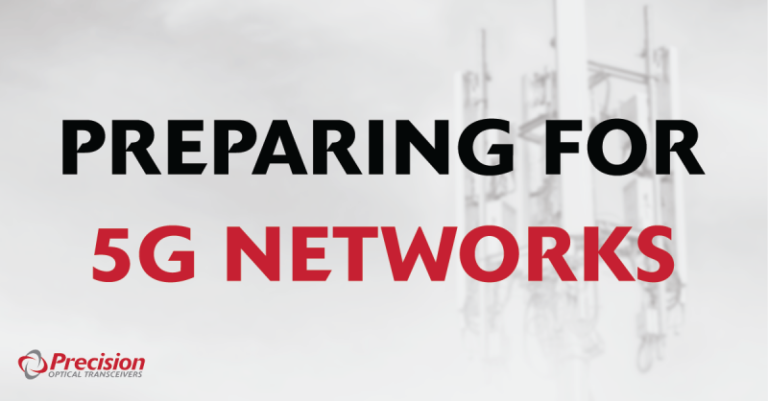
5G and Its Impact on Optical Networks

Fifth-generation wireless communication, better known as 5G, is on its way. While previous “generations” represented significant upgrades to data capacities and speeds, 5G represents an even bigger change: a paradigm shift in terms of how data is transmitted and what kinds of devices are communicating with one another. For 5G, it is less about enhancing smartphone abilities and more about interconnectivity between all kinds of devices —home appliances, medical wearables, vehicles and more.
One of the key elements in 5G deployment will be the channeling of data along previously unused segments of the radio-frequency spectrum —in particular, extremely-high-frequency (EHF) bands between 30-300 GHz known as “millimeter waves.” These millimeter waves can achieve data transmission rates as high as 1 gigabit per second, but they do not transmit well through obstacles. As a result, 5G architects have looked to a new data relay strategy: densely-deployed “small cell” networks that use multiple transmit and receive antennas to multiply capacity, while also reducing latency.
The challenge of generating EHF bands in the electrical domain has led these same architects to look to the alternative of photonic signal generation —creating a clear role for optical networks in the creation of 5G infrastructure.
How exactly this will manifest itself, however, remains to be seen. A key question to be determined in any given deployment is the most cost-effective blend of fiber-optic and wireless technologies in different areas of the network. Last-mile passive optical networks (PONs), which use unpowered beam splitters to allow a single optical fiber to serve multiple endpoints, will likely become more common. Compared to active optical networks (AONs), PONs achieve greater reliability at lower cost.
At the same time, some of the assumptions that optical networking firms have built in to their product and market strategies up until now may prove incorrect, as the imagined need for “fiber-to-the-premises” (FTTP) deployment may be preempted by the high data capacities of wireless within a 5G landscape.
Another area where optical networking is likely to play a significant role in the rollout of 5G is the “backhaul” portion of the network: the intermediate links between the core, or backbone, network and the many small subnetworks at the edges. Because EHF bands are limited in range, high-speed backhaul will be critical for delivering the higher bandwidth promised by the new standard. Numerous studies have focused on the opportunity this creates for optical networking.
As far as an actual standard, however, it is still in development; the International Telecommunication Union (ITU) has set the year 2020 as a goal for its finalization, referring to the standard as International Mobile Telecommuncations-2020 (IMT-2020). Nevertheless, ITU members have already agreed upon key performance requirements, and the results of early trials and deployments will serve to assist in the development of the finalized specifications. Those who work at the forefront of optical networking technologies stand to benefit as the near future of wireless communication unfolds.
Precision Optical Technologies prides itself on its contributions to cutting-edge developments and advancements within the 5G millimeter wave industry.






